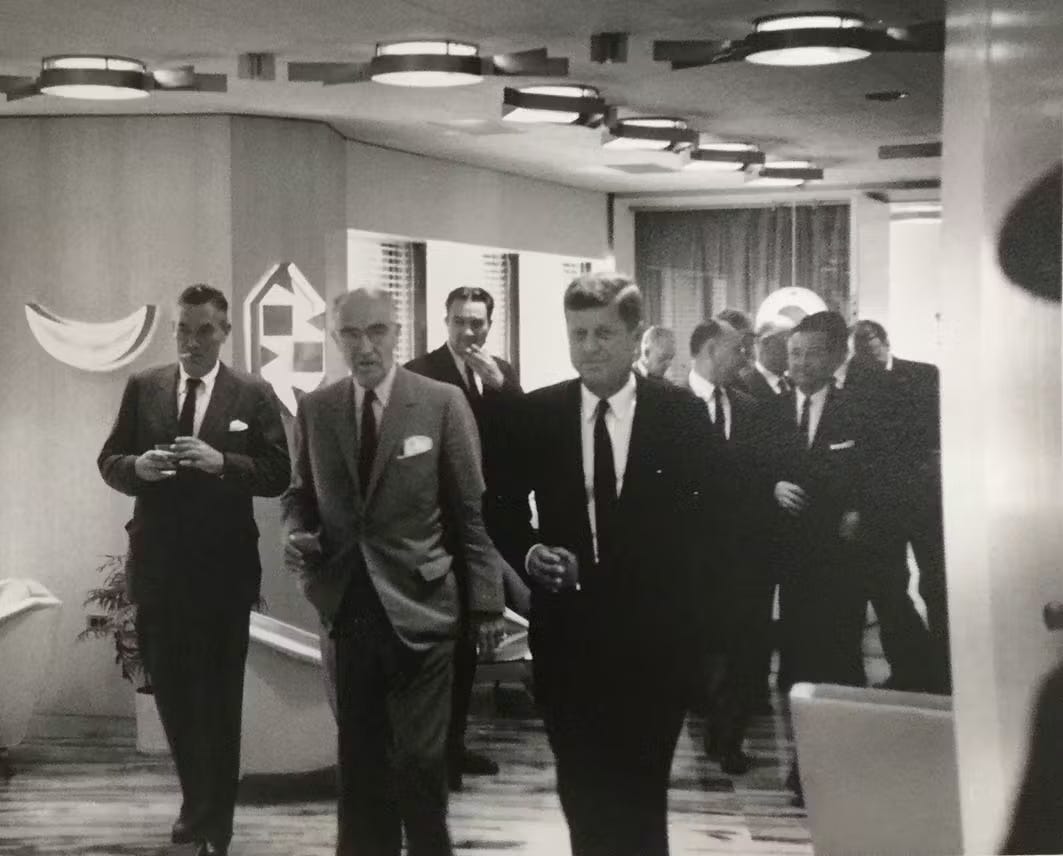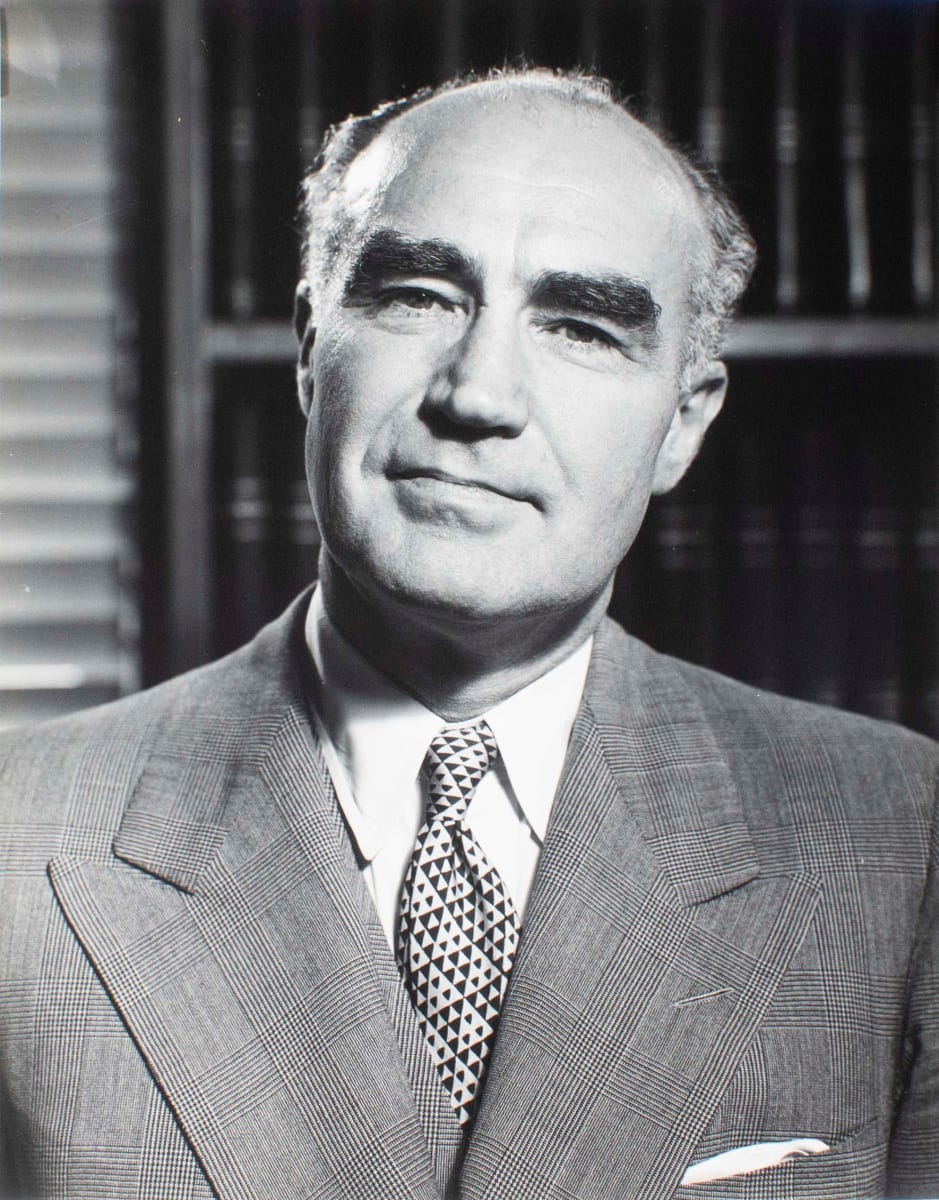Awareness of ideal values is the first step in the conscious creation of images of the future and therefore the creation of culture, for a value is by definition that which guides toward a "valued" future. Any student of the rise and fall of cultures cannot fail to be impressed by the role in this historical succession by the image of the future. The rise and fall of images of the future precedes or accompanies the rise and fall of cultures... In the end, the future may well be decided by the image which carries the greatest spiritual power.
—Fred Polak (1973), quoted from SRI’s Changing Images of Man
America is a religion without a god, it is a constellation of inland cosmoses. The United States is a self-assembling political cyborg, it has no ideology. Nothing is to be found at its center but the Promethean lust for material power. It is an Engine that runs on images. The man who can nuke the skies with his own images is king.

Henry Luce, the influential publisher of Time, Life, and Fortune magazines, had a strong fascination with power, often expressing admiration for figures like Mussolini. His work displayed evident “imperial” ambitions and he wasn't shy about using his publications to promote politicians he favored, such as Eisenhower. Luce held a fascination with Kennedy's Camelot, and, ironically, he was instrumental in burying certain parts of the Kennedy assassination.
Luce had deep connections with the Central Intelligence Agency (CIA) through his friend Charles Douglas Jackson, who reportedly provided Time-Life credentials to CIA agents as cover. Luce's anti-Communist stance was tied to his religious convictions; he believed that Communism filled a spiritual void left by waning Christian faith.
Luce and his wife Clare were vocal critics of Fidel Castro and the revolutionary government in Cuba, helping form the non-partisan Citizens Committee to Free Cuba (CCFC), aimed at liberating Cuba from Castro's rule. They were also financiers of “Alpha 66,” an anti-Castro group that launched several attacks on Cuba, described as a “secret war.”

In The Powers That Be (1979), David Halberstam characterized Luce’s “anti-communism” as superseding his political alignment: “Luce’s politics hardened in the postwar years and Time had become increasingly Republican in its tone. He had been stunned by Truman’s defeat of Dewey in 1948. Then in the fall of 1949 China had fallen, the Democratic administration had failed to save Chiang, and that was too much; Truman, and even more Acheson, would have to pay the price. Time was now committed and politicized, an almost totally partisan instrument. The smell of blood was in the air. There was a hunger now in Luce to put a Republican back in power. It was as if Luce, between elections, stood as the leader of the opposition, a kingmaker who had failed to produce a king. The fall of China and the rise of a post-war anti-Communist mood had produced the essential issue to use against the Democrats: softness on Communism.”
The Luces used their media outlets, especially Life Magazine, to vigorously oppose the Kennedy administration, particularly its stance on Cuba. Their influence posed certain challenges for the president. Following Kennedy's assassination, C.D. Jackson, on Luce's behalf, bought the Zapruder Film – a key piece of evidence showing Kennedy's murder. The film was selectively published in Life Magazine but was not shown in its entirety. In The Great Zapruder Film Hoax (2004) author David Lifton states:
“Abraham Zapruder in fact sold the film to Time-Life for the sum of $150,000 – about $900,000 dollars in today’s money… Moreover, although Life had a copy of the film, it did little to maximize the return on its extraordinary investment. Specifically, it did not sell this unique property – as a film – to any broadcast media or permit it to be seen in motion, the logical way to maximize the financial return on its investment… A closer look revealed something else. The film wasn’t just sold to Life – the person whose name was on the agreement was C. D. Jackson.”
Hence, Luce was a figure of tremendous influence, who leveraged his media empire to mold public sentiment and further his political and ideological objectives, sometimes through overt methods and, occasionally, through covert ones.
In the context of China, Luce had a particularly radical stance. He advocated for the "liberation" of China from the control of the Communist Party, going so far as to suggest using nuclear weapons if necessary. This aspect of Luce's position was, however, surprisingly unpopular and did not gain traction. But this penchant for “nuclear diplomacy” gives us an idea about the lengths Luce was willing to go to— he was, if nothing else, a man of Faustian vision.
At Fortune, Luce was a staunch advocate for modernism and the rationalization of industry and commerce. He aimed to portray an idealized, harmonious vision of middle-class America in Life magazine. His global perspective of America, as expressed in his essay "The American Century", permeated his publications. Such was his belief in America's global ascendancy that he even contemplated transforming Fortune into a magazine dedicated to showcasing America's status as a world power.
Luce was largely responsible for the use of modern art as a weapon of psychological warfare. To underscore Luce’s influence, it is worth mentioning that he was responsible for the “Architecture of Democracy” a term he coined. In contrast to Nazi Germany’s internal redesign, which was led by Hitler himself and his architect Speer, or the examples of the Romans, Greeks, and the British, it was an apparently “private citizen” that decided how America would be presented abroad.
The Architectural Forum, another magazine owned by Luce, is the main reason overseas modernist architecture was not rejected like much of the modern art of the time. In a 1953 article praising the Foreign Building Operations (FBO), it proclaimed that U.S. architecture, serving as a tool of diplomacy, was a "vehicle of our cultural leadership". This was especially significant in the context of the Cold War rhetoric. Luce's enthusiasm for modernism, combined with his considerable influence through Time, Life, and Fortune, played a vital role in endorsing this design direction. Despite attempts by Congress in the early 1950s to curtail FBO's autonomy and its exploration of modernism due to their feelings of overwhelming, instinctual revulsion, the postwar design program unexpectedly sustained its trajectory and even broadened its commitment to the new aesthetic. (Loeffler 1998)
Apprehending that Luce was more powerful than most government institutions is critical to understanding the development of Luce's "American Century," his vision of the United States as the global torchbearer in the 20th century. His grand presentiment was ostensibly rooted in America's “free-market capitalism,” its assertion of navigation rights for global commerce, and its spread of influence through international trade and cultural imperialism. As we can see, in the present denouement of “free-market capitalism” in the nightmarish spectacle of Black Rock and ESG scores, the total war against the middle and working classes, and the demolition of the manufacturing base, reveals that the empire Luce constructed was none other than the supranational civilization. The pregnant sphere of “globalism” is the secret shape of the eternal cosmopolis, the unending city.
In essence, Luce’s "American Century" rhetoric must be seen as an essential precursor to the globular blob-tyranny we face today. Yet, more importantly, his proposition of the U.S. exporting its cultural influences, citing "movie men, makers of entertainment," among other artistic professions in his seminal essay, is best understood within the framework of “dual use.” If the psychotronic machinations of cultural influence could be directed at the populations of countries like China or Russia, why not America itself?
Indeed, this notion of "soft power" was another strategic tool, similar to surveillance, cybernetics, or non-lethal "neuroweapons" that were always meant to be utilized against the most genuine threat to a superpower: its own citizens. As we discussed in 'Sputnik’s Children,' the Cold War hysteria was, in large part, a media-induced fabrication. It was characterized by 'kayfabe' - a choreographed, para-real deception managed by the CIA and certain deep actors. This is corroborated by the work of Anthony Sutton in his Trilogy Of Western Technology And Soviet Economic Development:
In a few words: there is no such thing as Soviet technology. Almost all — perhaps 90-95 percent — came directly or indirectly from the United States and its allies. In effect the United States and the NATO countries have built the Soviet Union. Its industrial and its military capabilities. This massive construction job has taken 50 years. Since the Revolution in 1917. It has been carried out through trade and the sale of plants, equipment and technical assistance.
— Antony Sutton, Testimony of the Author Before Subcommittee VII of the Platform Committee of the Republican Party, 1972
This stagecraft would have been all too familiar to Luce, a member of the Skull & Bones Society and a close ally of CIA director Allen Dulles. Indeed, with every interconnection revealed, it becomes increasingly clear that Luce's ambitions transcended national interest and hinted towards a more perpetual objective.
Keep reading with a 7-day free trial
Subscribe to Schwabstack to keep reading this post and get 7 days of free access to the full post archives.








